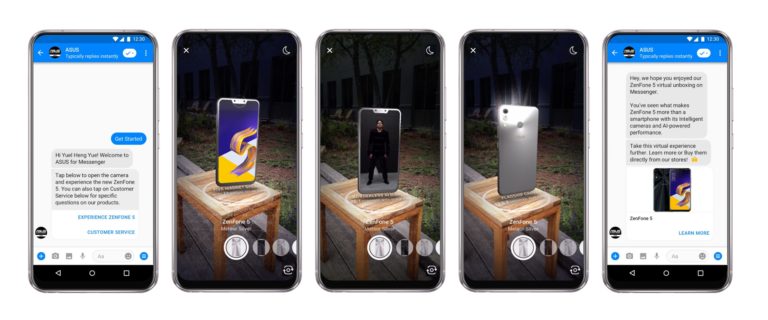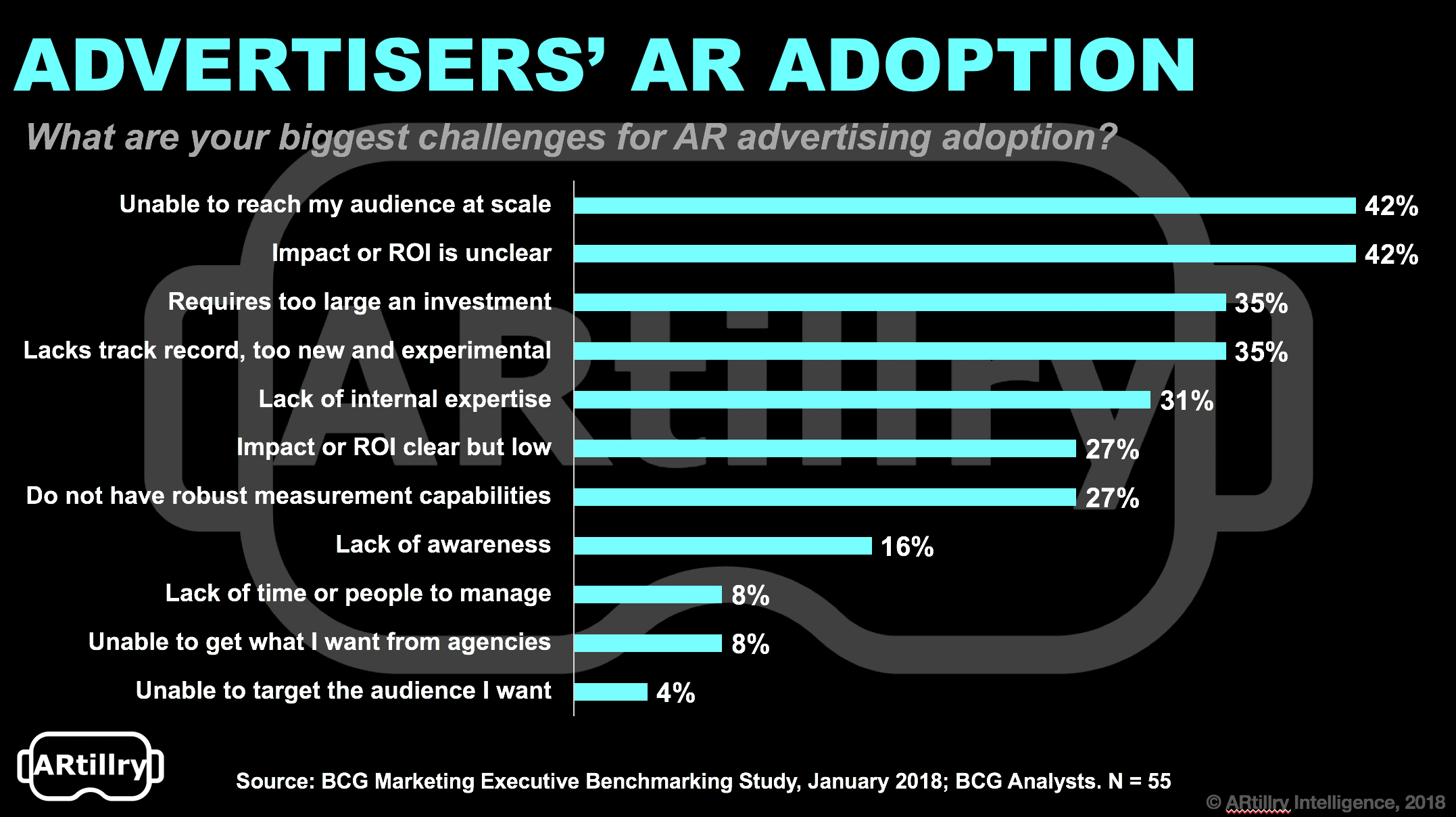
Data Point of the Week is AR Insider’s weekly dive into data from around the XR universe. Spanning usage and market-sizing data, it’s meant to draw insights for XR players or would-be entrants. To see an indexed archive of data briefs and slide bank, subscribe to ARtillry Pro.
AR advertisers today represent an adoptive minority. How does the rest of the industry look? According to Boston Consulting Group (BCG), ten percent of companies have AR campaigns, 45 percent are interested, and 35 percent foresee campaign launches within two years (see below).
As for the stage in the consumer purchase funnel where AR is making a mark, it’s mostly in “consideration.” This makes sense, as higher-funnel stages like awareness are better served by reach media like TV. But as we’ve examined, AR can achieve full-funnel engagement.
Advertisers see this potential: when asked where AR will be in two years, survey respondents see it moving down the funnel. They also recognize that AR’s melding of the digital and physical makes it fitting to proximity-based engagement like Google Lens or in-store overlays.


But advertisers’ feelings on the AR advertising opportunity aren’t all positive. They show lots of signs of doubt or uncertainty. Among those uninterested in AR advertising, top reasons for holding back include a lack of scale, internal expertise and unclear ROI (figures below).
This speaks to the need for education because the KPIs for AR’s advertising efficacy are certainly there. Advertisers just have to be made aware en masse, which will take a while if history is any indication. Their acclimation to smartphone advertising is still underway, ten years later.
But it goes beyond awareness and even real interest and adoption. AR ad campaign effectiveness and sustained spending will come down to execution. And that will be an even longer learning curve, which will be all about native design and measuring the right things.
“With immersive technology, everyone’s going to ask for the ROI,” You Are Here Labs’ futurist Kathy Hackl said at AWE. “Do we need to create new metrics… something like return on engagement or whatever that would translate to? There’s definitely going to be new metrics.”

When it comes to AR’s ad scenarios, there are lots of potential strengths including the high user engagement and performance indicators we examined recently. But though that could be effective on an individual-impression basis, AR advertising could be challenged to scale in the aggregate.
In other words, AR in the next 12-18 months will continue to have a relatively niche status in media and advertising terms. This diminishes reach, which is a primary objective of most brand advertisers and ad agencies. There’s not enough scale yet in AR to get them excited.
Quantifying that, there are about 2000 ARkit apps within a universe of about 2.2 million iOS apps. And there are just under a billion AR-compatible smartphones. That’s a strong addressable market, but a more relevant figure is the actual market of 136 million active AR users.
On the plus side, active users will grow to more than a billion by 2022. And it should be noted that there’s lots of active AR engagement today (especially with AR advertising) outside of the above numbers, given ads built on Snapchat’s AR Studio and Facebook Camera Effects.

 Simplified version: See report for full detail
Simplified version: See report for full detail
Beyond active users, it’s also important to consider usage behavior. For example AR session lengths are short due to arm strain of holding one’s phone up. Developers are learning and applying this to app design which is a good thing: but a by-product is diminished ad inventory.
Those ad inventory constraints combined with advertisers’ historically-validated pace of new technology adoption (and the above survey data) signal that AR ad revenues will be relatively moderate in the near term. But we believe they will accelerate as advertisers get acclimated.
We project that to happen to the tune of $2.6 billion by 2022. That’s a combination of display-oriented AR ads (e.g. branded AR lenses) and the nascent but potentially lucrative area of visual search. Like smartphone ad adoption over the past decade, it will build slow, then happen fast.
For deeper XR data and intelligence, join ARtillry PRO and subscribe to the free AR Insider Weekly newsletter.
Disclosure: AR Insider has no financial stake in the companies mentioned in this post, nor received payment for its production. Disclosure and ethics policy can be seen here.
Header image credit: Facebook
